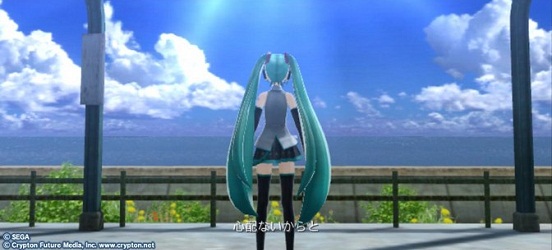A pop star is not a real person. The images you see of pop music chart-toppers do not depict humans being themselves, but being what a corporate body has decided that person should be, with the objective of printing money. The people who inhabit the avatars of these modern idols would often be nothing like their on-screen personas, were it not for the dumptrucks full of money involved. The creators of Hatsune Miku took this idea to an extreme, creating a virtual pop star who lacks a physical body, but possesses all of the automated, manufactured coolness and cuteness of her “living” counterparts. The results are genius.
Hatsune Miku: Project Diva f is a rhythm game whose soundtrack is comprised of electronic Japanese pop music. Singing these songs is a handful of vocaloids, primarily the game’s title character, Hatsune Miku. Players time their button presses and holds as the timing and screen prompts indicate, hoping for a high enough score to unlock more songs, as well as earn the Diva Points necessary to grab goodies from the shop. As with many series making the transition from PSP to Vita, this new entry adds touchscreen use to the franchise’s formula. Given the Vita’s topography, the transition periods can feel awkward at first, but thankfully, they’re not so jarring as to actually mess up your groove. It’s well designed so that the taps generally come in groups, rather than mixing in with button presses. This keeps everything manageable.
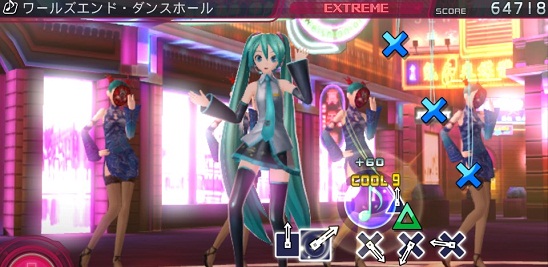
A second addition made possible by the Vita is the AR concert mode, allowing bigtime Miku fans to watch the green-haired diva perform her hits anywhere they can imagine. It doesn’t add a ton to the game, but it’s a neat throw-in.
Four difficulty settings make the game highly accessible to game fans of practically any age or skill level. Easy Mode will only ever require a player to use the touchscreen and circle button and include less total hits than other modes; meanwhile, Extreme is just as crazy as its name would indicate with its bounty of extra taps and combos coming from all over the place — no false advertising here. Even for those with minimal experience in the genre, this game delivers. A new player can escalate through the difficulty settings enjoying a fine learning curve and challenging oneself anew in every song. Rhythm fans of all experience levels take note, this game will challenge you.
Newcomers also needn’t worry about never having played a Miku game before. It’s not like there’s a complicated story to it or anything, you just get in there and start belting out some songs. Play the easily understood tutorial and boom, you’re good to go. The biggest barrier to entry might more likely be the nature of J-pop itself, as it can be a very love-it-or-hate-it genre. Even then, given the strength of the core rhythm game itself, some players might overcome those inhibitions. For example, your reviewer.
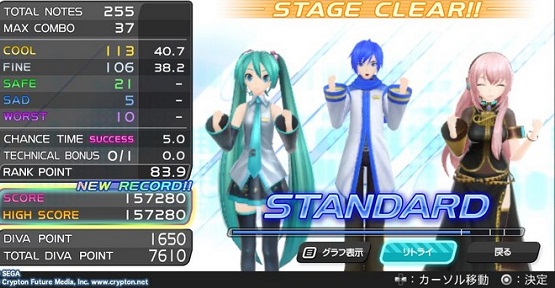
While I enjoy some Japanese rock, I usually dislike J-pop, exceptions being very few and far between. Yet somehow, the music in HM:PDf slowly grew on me. Playing the game, tapping the buttons and screen trying for a higher score and more unlockables, odd as it may sound, can make the soundtrack become gradually more tolerable. For those that already like J-pop, this obviously isn’t an issue, and such gamers would presumably find the songs highly enjoyable without it having to become an acquired taste.
Longtime Miku fans are sure to love the amount of unlockable content here. Playing through the songs will earn points that can be spent on any number of costume changes, and said changes of appearance will be present during future playthroughs. From kimonos to sun dresses to bikinis, long pigtails to…hair styles I don’t know the name of but are probably impossible for a real person to pull off, there are a lot of outfit changes available.
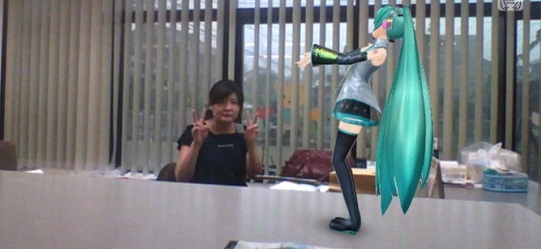
The visuals during most of the music videos are fantastic, bright and shiny as they need to be, while seemingly using every color known to man. These videos are also well directed and for players lighthearted enough, kinda cool to watch. (Just be careful not to get too caught up doing so while you’re playing, yeah?) At the menus, however, it seems like the level of detail took a step down. The vocaloids’ faces seem just a tiny bit more blurry than they should. I’m not sure what happened there, but it’s a slight disappointment that makes itself most present in the Diva Room. HM:PDf looks fine overall, but one can’t help but notice that small drawback at the menus.
The Diva Room lets players spend quality time with their favorite electronic pop stars. Though starting out looking like something out of a cabin aboard generic SciFi space cruiser, the room can become a highly customized headquarters of chillaxing. Using points earned in the rhythm game, players can buy all sorts of little upgrades, theme changes, and furniture to put around the room. Interactions with the stars can improve their happiness level and boost the player’s friendship.
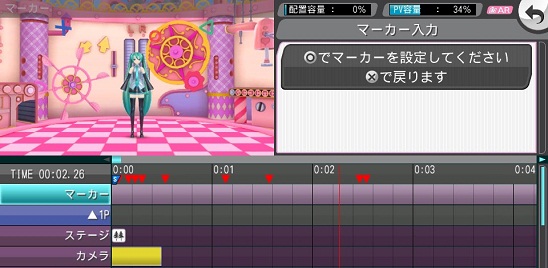
If the 32 songs and their respective videos included in Project Diva f are not quite enough, the game gives players the tools to make completely new versions, editing practically every detail they desire. This mode probably won’t be used by most players, as it’s extremely time consuming, but it adds longevity and depth to a game that already had plenty of both. The sweet rewards of Edit Mode can be enjoyed easily by all, however, as sharing your customized game stages is incredibly easy, as is downloading levels made by others.
Sega has a success story with the Hatsune Miku series, and Project Diva f is a fine entry, worthy of being the first to grace the Vita. Its gameplay is quite fun, and it comes packed with super amounts depth for those that want it, make it fine for both casual players and those who want something to really sink their teeth into. It’s really amazing how well this is put together to accommodate such a wide variety of preferences and time commitments. Some people might things a bit too seriously and get caught up in the Japanese-ness (for lack of a better term) of everything and now allow themselves to enjoy the genuinely well-made rhythm game at the heart of Hatsune Miku: Project Diva f. Fortunately, that’s a judgement call you can make somewhat easily. Take what you know from the review above, look at the aesthetics, listen to some Hatsune Miku music, and if it seems weird, ask yourself, “If I knew there were a damn good rhythm game mixed in with that…could I enjoy it?” That’ll answer your question.
Even taking away all its bells and whistles like the unlockables and the editor, the music game itself is as solid as they come. Gamers curious to try something new — especially those already into rhythm games — might just do themselves a favor by turning off their inhibitions and checking out the Japanese phenomenon that is Hatsune Miku.
(Post-review notes for importers. Read the PSLS guide to importing here.)
The rhythm game portion of Hatsune Miku: Project Diva f is clearly its most important part, and if that’s pretty much all that matters to you, then you need not speak a lick of Japanese to be able to fudge your way through the whole track list, maybe encountering an experimental flub or two; you’ll figure out what’s what quickly. Knowing how to read some katakana will help, as it does in any Japanese game; that will let you know exactly what you’re doing on a lot of the menu commands instead of having to experiment. An intermediate amount of reading ability will be needed in order to be certain of what exactly you’re doing in the Diva Room and within its associated shop. An advanced level of Japanese is required for understanding the music editor commands, though even then, its interface is not the most intuitive in the world, so there may be additional confusion. If you’re wanting to dive into the depths and explore the music editor, make sure your Japanese is solid before importing this. But if you know nothing or are just okay, and if you’re satisfied playing the rhythm game and not being able to understand some of your Diva Room options, then you can easily mash the Go Button on this.
-
Crazy amount of depth, longevity, and customization.
-
A good, accessible series entry point for curious first-timers, even those importing.
-
Snappy game design, upbeat music, and energetic videos make for contagious fun.
-
How many ways do I need to say that it's fun to play, really?
-
Weird blur on the character models sometimes.
-
AR concerts held back by Vita's underpowered camera.
